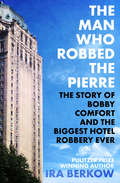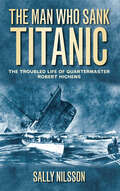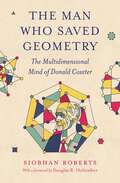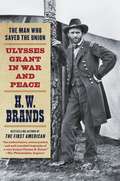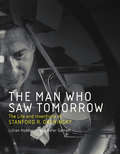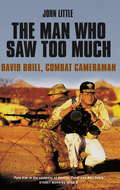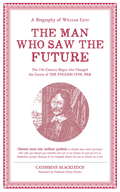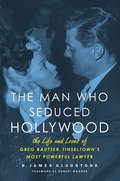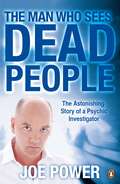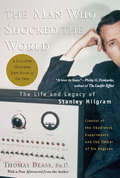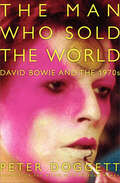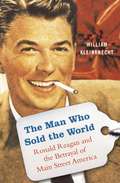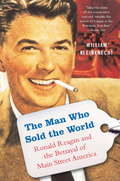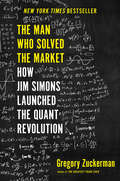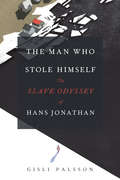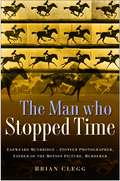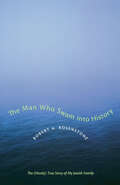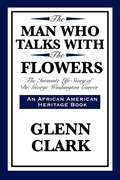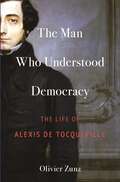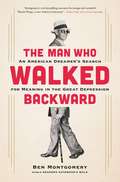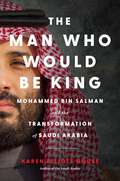- Table View
- List View
The Man Who Robbed the Pierre: The Story of Bobby Comfort and the Biggest Hotel Robbery Ever
by Ira BerkowThis Pulitzer Prize–winning author&’s true account of the thief behind the famed 1972 heist is &“an engrossing crime biography . . . [and] a fast-paced romp&” (Kirkus Reviews). Growing up in Rochester, New York, Bobby Comfort wanted to be a good something. It just so happened that he was great at being a criminal. In January 1972, men in tuxedos robbed the Pierre, the luxurious Manhattan hotel, and got away with eleven million dollars&’ worth of cash and jewelry. The police were baffled by how such a large-scale operation could go off so smoothly. The answer lay in the leader of the thieves, a man by the name of Bobby Comfort. He had taken to crime from a young age with card sharping and petty theft. Eventually, taking money from the rich was where he excelled. Sort of like Robin Hood—except for the part where he kept the loot himself—Comfort masterminded what was, at the time, the most lucrative heist in history, while appearing to his neighbors like an ordinary suburban family man. In this blend of insightful biography and true crime, Pulitzer Prize–winning journalist Ira Berkow chronicles the story, using first-hand accounts to weave together a fascinating portrait of a criminal and &“a corking good cops-and-robbers tale&” (Library Journal).
The Man Who Rode the Thunder
by William H. RankinIt was July 26, 1959. An F8U Crusader jet fighter streaked across the sky, down the Carolina coast, close to the speed of sound. Altitude: 47,000 feet. Flying conditions: Perfect. Marine Lt. Colonel William Rankin gave only a fleeting glance at the mounting black thunderheads far below. Seconds later began the most incredible 40 minutes in history. Here is the thrilling, detailed account of how Col. Rankin was forced to bail out at almost 50,000 feet without special pressure equipment. How, after dropping 7 miles in a free fall, he plunged into the grip of a violent storm--an inferno of turbulence, rain, hail, thunder and lightning such as no man had ever seen before. For over a half hour, Col. Rankin was an airborne captive of the storm, and his eventual survival was against overwhelming odds. Here is the true story behind that headline-making event. And here is the adventurous life of the Marine--a life that fitted him so well for the fantastic ordeal he was forced to undergo. You will go with Col. Rankin as he recalls his adventures as a Marine Sergeant in World War II; into early flight training to become one of the three oldest cadets ever admitted for flying. You will fly with him as one of the famous "Fearless Four" as they bomb the bridges of Toko-Ri in Korea. You will know the thrill of trailblazing the jet age when Col. Rankin assumes command of the famous Marine Fighter Squadron 122. Finally, you will share one of the most astounding adventures of modern times--a thrilling epic of man against the terrifying forces of nature--the story of a man who survived because he had lived and trained in the true tradition of the United States Marine Corps. This book also serves as an important contribution to medical inquiries into what happens to man at great altitudes.
The Man Who Sank Titanic: The Troubled Life of Quartermaster Robert Hichens
by Sally NilssonRobert Hichens has gone down in history as the man who was given the famous order to steer the Titanic away from the iceberg and failed. Following this, his falling out with the ‘Unsinkable Molly Brown’ over the actions of the lifeboats saw him branded a coward and his name indelibly tarnished. A key witness at both US and British Inquiries, Robert returned to a livelihood where fellow crewmen considered him jinxed. But Robert had a long career and was a hardworking, ambitious seaman. A fisherman at 19, he quickly became a junior officer in the merchant navy. In the Second World War he was part of a cargo ship convoy on route to Africa where his ship dodged mines, U-boats and enemy aircraft. To Robert, being at sea was everything but the dark memories of the Titanic were never far away and in 1933 a failed murder attempt after a bitter feud nearly cost Robert his life. Here Robert’s great-granddaughter Sally Nilsson seeks to set the record straight and reveal the true character of the man her family knew. This is one man’s story of survival, betrayal and determination.
The Man Who Saved Geometry: The Multidimensional Mind of Donald Coxeter
by Siobhan RobertsAn illuminating biography of one of the greatest geometers of the twentieth centuryDriven by a profound love of shapes and symmetries, Donald Coxeter (1907–2003) preserved the tradition of classical geometry when it was under attack by influential mathematicians who promoted a more algebraic and austere approach. His essential contributions include the famed Coxeter groups and Coxeter diagrams, tools developed through his deep understanding of mathematical symmetry. The Man Who Saved Geometry tells the story of Coxeter&’s life and work, placing him alongside history&’s greatest geometers, from Pythagoras and Plato to Archimedes and Euclid—and it reveals how Coxeter&’s boundless creativity reflects the adventurous, ever-evolving nature of geometry itself. With an incisive, touching foreword by Douglas R. Hofstadter, The Man Who Saved Geometry is an unforgettable portrait of a visionary mathematician.
The Man Who Saved the Union: Ulysses Grant in War and Peace
by H. W. BrandsFrom New York Times bestselling author H. W. Brands, a masterful biography of the Civil War general and two-term president who saved the Union twice, on the battlefield and in the White House, holding the country together at two critical turning points in our history. Ulysses Grant rose from obscurity to discover he had a genius for battle, and he propelled the Union to victory in the Civil War. After Abraham Lincoln's assassination and the disastrous brief presidency of Andrew Johnson, America turned to Grant again to unite the country, this time as president. In Brands's sweeping, majestic full biography, Grant emerges as a heroic figure who was fearlessly on the side of right. He was a beloved commander in the field but willing to make the troop sacrifices necessary to win the war, even in the face of storms of criticism. He worked valiantly to protect the rights of freedmen in the South; Brands calls him the last presidential defender of black civil rights for nearly a century. He played it straight with the American Indians, allowing them to shape their own fate even as the realities of Manifest Destiny meant the end of their way of life. He was an enormously popular president whose memoirs were a huge bestseller; yet within decades of his death his reputation was in tatters, the victim of Southerners who resented his policies on Reconstruction. In this page-turning biography, Brands now reconsiders Grant's legacy and provides a compelling and intimate portrait of a man who saved the Union on the battlefield and consolidated that victory as a resolute and principled political leader.
The Man Who Saw Tomorrow: The Life and Inventions of Stanford R. Ovshinsky (The\mit Press Ser.)
by Lillian Hoddeson Peter GarrettThe first full-length biography of a brilliant, self-taught inventor whose innovations in information and energy technology continue to shape our world.The Economist called Stanford R. Ovshinsky (1922–2012) “the Edison of our age,” but this apt comparison doesn't capture the full range of his achievements. As an independent, self-educated inventor, Ovshinsky not only created many important devices but also made fundamental discoveries in materials science. This book offers the first full-length biography of a visionary whose energy and information innovations continue to fuel our post-industrial economy.In The Man Who Saw Tomorrow, Lillian Hoddeson and Peter Garrett tell the story of an unconventional genius with no formal education beyond high school who invented, among other things, the rechargeable nickel metal hydride batteries that have powered everything from portable electronics to hybrid cars, a system for mass-producing affordable thin-film solar panels, and rewritable CDs and DVDs. His most important discovery, the Ovshinsky effect, led to a paradigm shift in condensed matter physics and yielded phase-change memory, which is now enabling new advances in microelectronics. A son of the working class who began as a machinist and toolmaker, Ovshinsky focused his work on finding solutions to urgent social problems, and to pursue those goals, he founded Energy Conversion Devices, a unique research and development lab. At the end of his life, battered by personal and professional losses, Ovshinsky nevertheless kept working to combat global warming by making solar energy “cheaper than coal”—another of his many visions of a better tomorrow.
The Man Who Saw Too Much: David Brill, Combat Cameraman
by John LittleThis is the story of David Brill, one of the very best of Australian cameramen - past and present. He is in the same company as Damien Parer and Neil Davis.Over the past forty years he has covered wars and disasters all over the world. He filmed the fall of Saigon. He was in Moscow during the collapse of communism. He has covered countless other conflicts and natural disasters in Asia, Africa and North and South America.He has been single-mindedly dedicated to the pursuit of his craft: to get the story, get the film - always to preserve and present the human dimension, no matter how large or mindless the conflict or event.David Brill has paid a high price for this uncompromising style. He has two failed marriages, and at times has been overcome by demons such as alcohol. This biography is also a great adventure story, a journey through war zones and various hell holes of the world. And it is an inside look at what makes some people follow a profession where their life is on the line - as a standard feature of their day.
The Man Who Saw the Future
by Catherine BlackledgeA spellbinding tale of prophecy, power and politics, this book tells the fascinating story of the 17th-century astrologer William Lilly how his celestial forecasts of the future changed the course of the English Civil War, and the establishment s attempts to silence him.Winter, 1643. Astrologer William Lilly is gazing at a chamber pot. Parliament has asked him to help: will leader John Pym live or die? Using an ancient astrological technique called horary, Lilly predicts Pym will die in eight days time. He is correct.In the pages of his best-selling pamphlets, Lilly enthrals the civil war-torn nation with his uncannily accurate astral forecasts of who will triumph in combat. He advises the New Model Army on when to fight based on his judgement of King Charles I s horoscope; the key battle of Naseby is won with this astrological intelligence. Foreseeing the King s death seals his status as the nation s arch magus. But not everyone is happy with Parliament s new prophet and his enemies begin to plot their revenge. Can Lilly s astonishing gift help him best those in power, and save his profession and his life?With a cast of star-gazers, soldiers and scryers; politicians, priests and prophets, internationally acclaimed author Catherine Blackledge grants a fresh insight into a tumultuous period: illuminating William Lilly s extraordinary life and revealing the secrets of his astonishing foresight.
The Man Who Seduced Hollywood: The Life and Loves of Greg Bautzer, Tinseltown's Most Powerful Lawyer
by Robert Wagner B. James GladstoneIn Hollywood history, no other lawyer has achieved the movie star-like fame and glamour that Greg Bautzer enjoyed. This revealing biography tells, for the first time, the amazing story of a self-made man who for 50 years used his irresistible charm and prodigious legal talent to dominate the courtrooms, boardrooms, and bedrooms of Hollywood. Columnists of the 1930s through 1950s dubbed him "Hollywood Bachelor Number One," and for good reason. His long-term relationships and momentary conquests were a who's who of leading ladies. Through exclusive interviews with those who knew him best, the book uncovers the inner workings of not only Bautzer the high-powered Hollywood lawyer--whose clients included billionaire Howard Hughes--but Bautzer the man.
The Man Who Sees Dead People: The Astonishing Story Of A Psychic
by Joe PowerFor almost a decade, psychic medium Joe Power has used his extraordinary powers to investigate high-profile, unsolved crimes around the world, including, most recently, the disappearance of Madeleine McCann.But it wasn't always this way. Joe had denied his psychic abilities until the day his brother was found dead. Then messages from the spirit world led him to see the shocking truth behind the tragedy . . . his brother had been murdered.Joe realized he could no longer ignore the startling visions and voices in his head. He vowed to use his psychic gift to help solve the murder cases that were leaving detectives baffled, and loved ones without closure. In The Man Who Sees Dead People he tells the astonishing story of his life for the first time.
The Man Who Shocked The World: The Life and Legacy of Stanley Milgram
by Thomas BlassCreator of the famous Obedience Experiments and originator of the ?six degrees of separationOCO theory, Stanley Milgram transformed our understanding of human nature and continues to be one of the most important figures in psychology and beyond. In this sparkling biography, Thomas Blass captures the colorful personality and pioneering work of a visionary scientist who revealed the hidden workings of our social world. In this new paperback edition, he includes an afterword connecting MilgramOCOs theories to torture, war crimes, and Abu Ghraib. "
The Man Who Sold the World: David Bowie and the 1970s
by Peter DoggettThe Man Who Sold the World is a critical study of David Bowie's most inventive and influential decade, from his first hit, "Space Oddity," in 1969, to the release of the LP Scary Monsters (and Super Creeps) in 1980. Viewing the artist through the lens of his music and his many guises, the acclaimed journalist Peter Doggett offers a detailed analysis—musical, lyrical, conceptual, social—of every song Bowie wrote and recorded during that period, as well as a brilliant exploration of the development of a performer who profoundly affected popular music and the idea of stardom itself.Dissecting close to 250 songs, Doggett traces the major themes that inspired and shaped Bowie's career, from his flirtations with fascist imagery and infatuation with the occult to his pioneering creation of his alter-ego self in the character of Ziggy Stardust. What emerges is an illuminating account of how Bowie escaped his working-class London background to become a global phenomenon. The Man Who Sold the World lays bare the evolution of Bowie's various personas and unrivaled career of innovation as a musician, singer, composer, lyricist, actor, and conceptual artist. It is a fan's ultimate resource—the most rigorous and insightful assessment to date of Bowie's artistic achievement during this crucial period.
The Man Who Sold the World: Ronald Reagan and the Betrayal of Main Street America
by William KleinknechtSince Ronald Reagan left office--and particularly after his death--his shadow has loomed large over American politics: Republicans and many Democrats have waxed nostalgic, extolling the Republican tradition he embodied, the optimism he espoused, and his abilities as a communicator. This carefully calibrated image is complete fiction, argues award-winning journalist William Kleinknecht. The Reagan presidency was epoch shattering, but not--as his propagandists would have it--because it invigorated private enterprise or made America feel strong again. His real legacy was the dismantling of an eight-decade period of reform in which working people were given an unprecedented sway over our politics, our economy, and our culture. Reagan halted this almost overnight.In the tradition of Thomas Frank's What's the Matter with Kansas?, Kleinknecht explores middle America--starting with Reagan's hometown of Dixon, Illinois--and shows that as the Reagan legend grows, his true legacy continues to decimate middle America.
The Man Who Sold the World: Ronald Reagan and the Betrayal of Main Street America
by William KleinknechtSince Ronald Reagan left office-and particularly after his death-his shadow has loomed large over American politics: Republicans and many Democrats have waxed nostalgic, extolling the Republican tradition he embodied, the optimism he espoused, and his abilities as a communicator. This carefully calibrated image is complete fiction, argues award-winning journalist William Kleinknecht. The Reagan presidency was epoch shattering, but not-as his propagandists would have it-because it invigorated private enterprise or made America feel strong again. His real legacy was the dismantling of an eight-decade period of reform in which working people were given an unprecedented sway over our politics, our economy, and our culture. Reagan halted this almost overnight. In the tradition of Thomas Frank’s What’s the Matter with Kansas?, Kleinknecht explores middle America-starting with Reagan’s hometown of Dixon, Illinois-and shows that as the Reagan legend grows, his true legacy continues to decimate middle America.
The Man Who Solved the Market: How Jim Simons Launched the Quant Revolution
by Gregory ZuckermanGregory Zuckerman, the bestselling author of The Greatest Trade Ever and The Frackers, answers the question investors have been asking for decades: How did Jim Simons do it? <P><P>Shortlisted for the Financial Times/McKinsey Business Book of the Year AwardJim Simons is the greatest money maker in modern financial history. No other investor--Warren Buffett, Peter Lynch, Ray Dalio, Steve Cohen, or George Soros--can touch his record. <P><P>Since 1988, Renaissance's signature Medallion fund has generated average annual returns of 66 percent. The firm has earned profits of more than $100 billion; Simons is worth twenty-three billion dollars.Drawing on unprecedented access to Simons and dozens of current and former employees, Zuckerman, a veteran Wall Street Journal investigative reporter, tells the gripping story of how a world-class mathematician and former code breaker mastered the market. Simons pioneered a data-driven, algorithmic approach that's sweeping the world. <P><P>As Renaissance became a market force, its executives began influencing the world beyond finance. Simons became a major figure in scientific research, education, and liberal politics. Senior executive Robert Mercer is more responsible than anyone else for the Trump presidency, placing Steve Bannon in the campaign and funding Trump's victorious 2016 effort. <P><P>Mercer also impacted the campaign behind Brexit.The Man Who Solved the Market is a portrait of a modern-day Midas who remade markets in his own image, but failed to anticipate how his success would impact his firm and his country. It's also a story of what Simons's revolution means for the rest of us. <P><P><b>A New York Times Bestseller</b>
The Man Who Stole Himself: The Slave Odyssey of Hans Jonathan
by Gisli PalssonThe island nation of Iceland is known for many things--majestic landscapes, volcanic eruptions, distinctive seafood--but racial diversity is not one of them. So the little-known story of Hans Jonathan, a free black man who lived and raised a family in early nineteenth-century Iceland, is improbable and compelling, the stuff of novels. In The Man Who Stole Himself, Gisli Palsson lays out the story of Hans Jonathan (also known as Hans Jónatan) in stunning detail. Born into slavery in St. Croix in 1784, Hans was taken as a slave to Denmark, where he eventually enlisted in the navy and fought on behalf of the country in the 1801 Battle of Copenhagen. After the war, he declared himself a free man, believing that he was due freedom not only because of his patriotic service, but because while slavery remained legal in the colonies, it was outlawed in Denmark itself. He thus became the subject of one of the most notorious slavery cases in European history, which he lost. Then Hans ran away--never to be heard from in Denmark again, his fate unknown for more than two hundred years. It's now known that Hans fled to Iceland, where he became a merchant and peasant farmer, married, and raised two children. Today, he has become something of an Icelandic icon, claimed as a proud and daring ancestor both there and among his descendants in America. The Man Who Stole Himself brilliantly intertwines Hans Jonathan's adventurous travels with a portrait of the Danish slave trade, legal arguments over slavery, and the state of nineteenth-century race relations in the Northern Atlantic world. Throughout the book, Palsson traces themes of imperial dreams, colonialism, human rights, and globalization, which all come together in the life of a single, remarkable man. Hans literally led a life like no other. His is the story of a man who had the temerity--the courage--to steal himself.
The Man Who Stopped Time
by Brian CleggBrian Clegg tells the extraordinary story of the pioneer of photography, eccentric Victorian inventor Eadweard Muybridge. If most of us have seen Muybridge's distinctive stop-motion photographs, all of us have seen the fruit of his extraordinary technological innovation: today's cinema and television. But it is his personal life that possesses all the ingredients of a classic non-fiction best-seller: a passionately driven man struggling against the odds; dire treachery and shocking betrayal; a cast of larger-than-life characters set against a backdrop of San Francisco and the Far West in its most turbulent and dangerous era; a profusion of scientific and artistic advances and discoveries, one hotly following on another; the nervous intensity of two spectacular courtroom dramas (one pitting Muybridge against the richest man in the land and staring ruin in the face, the other sees him fighting for his life). And for the opening act, a foul murder on a dark and stormy night.
The Man Who Swam into History: The (Mostly) True Story of My Jewish Family (Jewish History, Life, and Culture)
by Robert A. RosenstoneThe story begins with a grandfather who heroically escaped from Russia by swimming the Pruth River to Romania—or did he? Then there are stories of another grandfather who kept a lifelong mistress; grandmothers who were ignored except in the kitchen; migrations legal and illegal from Eastern Europe to Canada to California; racketeers on one side of the family and Communists on the other; and a West Coast adolescence in the McCarthy years. All of these (mostly true) stories form a Jewish family's history, a tale of dislocation and assimilation. But in the hands of award-winning historian Robert Rosenstone, they become much more. The fragments of memory so beautifully preserved in The Man Who Swam into History add unforgettable, human characters to the now familiar story of the Jewish diaspora in the twentieth century. This combination memoir/short story collection recounts the Rosenstone family's passage from Romania to America. Robert Rosenstone tells the story not as a single, linear narrative, but through "tales, sequences, windows, moments, and fragments resurrected from the lives of three generations in my two parental families, set in five countries on two continents over the period of almost a century." This more literary and personal approach allows Rosenstone's relatives to emerge as distinct personalities, voices who quarrel and gossip, share their dreams and fears, and maintain the ties of a loving, if eccentric, family. Among the genre of "coming to America" tales, The Man Who Swam into History is a work of unique vision, one that both records and reconstructs the past even as it continuously—and humorously—questions the truth of its own assertions.
The Man Who Talks With The Flowers
by Glenn ClarkDuring his life time George Washington Carver was referred to as the black Leonardo da Vinci. His research into alternative crops to replace cotton, such as peanuts, soybeans and sweet potatoes revolutionized Southern farming. Carver was born into slavery, once slavery was abolished Carver traveled expensively to study and educate himself. He was the first head of the Agricultural Department at the famous Tuskegee Institute. This book is a recollection of Glenn Clark on his close relationship with Carver.
The Man Who Understood Democracy: The Life of Alexis de Tocqueville
by Olivier ZunzA definitive biography of the French aristocrat who became one of democracy’s greatest championsIn 1831, at the age of twenty-five, Alexis de Tocqueville made his fateful journey to America, where he observed the thrilling reality of a functioning democracy. From that moment onward, the French aristocrat would dedicate his life as a writer and politician to ending despotism in his country and bringing it into a new age. In this authoritative and groundbreaking biography, leading Tocqueville expert Olivier Zunz tells the story of a radical thinker who, uniquely charged by the events of his time, both in America and France, used the world as a laboratory for his political ideas.Placing Tocqueville’s dedication to achieving a new kind of democracy at the center of his life and work, Zunz traces Tocqueville’s evolution into a passionate student and practitioner of liberal politics across a trove of correspondence with intellectuals, politicians, constituents, family members, and friends. While taking seriously Tocqueville’s attempts to apply the lessons of Democracy in America to French politics, Zunz shows that the United States, and not only France, remained central to Tocqueville’s thought and actions throughout his life. In his final years, with France gripped by an authoritarian regime and America divided by slavery, Tocqueville feared that the democratic experiment might be failing. Yet his passion for democracy never weakened.Giving equal attention to the French and American sources of Tocqueville’s unique blend of political philosophy and political action, The Man Who Understood Democracy offers the richest, most nuanced portrait yet of a man who, born between the worlds of aristocracy and democracy, fought tirelessly for the only system that he believed could provide both liberty and equality.
The Man Who Walked Backward: An American Dreamer's Search for Meaning in the Great Depression
by Ben MontgomeryFrom Pulitzer Prize finalist Ben Montgomery, the story of a Texas man who, during the Great Depression, walked around the world -- backwards. Like most Americans at the time, Plennie Wingo was hit hard by the effects of the Great Depression. When the bank foreclosed on his small restaurant in Abilene, he found himself suddenly penniless with nowhere left to turn. After months of struggling to feed his family on wages he earned digging ditches in the Texas sun, Plennie decided it was time to do something extraordinary -- something to resurrect the spirit of adventure and optimism he felt he'd lost. He decided to walk around the world -- backwards. In The Man Who Walked Backward, Pulitzer Prize finalist Ben Montgomery charts Plennie's backwards trek across the America that gave rise to Woody Guthrie, John Steinbeck, and the New Deal. With the Dust Bowl and Great Depression as a backdrop, Montgomery follows Plennie across the Atlantic through Germany, Turkey, and beyond, and details the daring physical feats, grueling hardships, comical misadventures, and hostile foreign police he encountered along the way. A remarkable and quirky slice of Americana, The Man Who Walked Backward paints a rich and vibrant portrait of a jaw-dropping period of history.
The Man Who Went into the West: The Life of R.S. Thomas
by Byron RogersThe award-winning life story of Wales national poet and vicar R.S. Thomas is “a biography touched by genius.” (Craig Brown, Mail on Sunday)R.S. Thomas is widely considered as one of the twentieth-century’s greatest English language poets. His bitter yet beautiful collections on Wales, its landscape, people and identity, reflect a life of political and spiritual asceticism. Indeed, Thomas is a man who banned vacuum cleaners from his house on grounds of noise, whose first act on moving into an ancient cottage was to rip out the central heating, and whose attempts to seek out more authentically Welsh parishes only brought him more into contact with loud English holidaymakers.To Thomas’s many admirers this will be a surprising, sometimes shocking, but at last humanising portrait of someone who wrote truly metaphysical poetry.“A masterpiece.” —Daily Express“A striking, vivid and tender reading of the man . . . Excellent.” —Observer“Riotiously funny.” —Rowan Williams, Sunday Times“It is precisely Byron Rogers’ darkly comic sense of the ridiculous that melts the frost from the head of R.S. Thomas and humanizes a remote and bleakly beautiful writer.” —The Times“A chatty, disorderly but extremely good [biography] . . . A wonderfully comprehensive picture of the man.” —Daily Telegraph“As revealing an account of a severely private person that anyone could hope to achieve.” —Alan Brownjohn, Times Literary Supplement“Engagingly high-spirited and daring.” —Andrew Motion, Guardian Book of the Week“Charming and deftly written. . . . A very funny book.” —Literary Review“As readable and rounded a life of the man as could be written.” —TabletWinner of the James Tait Black prize for biography
The Man Who Went to War: A Reporter's Memoir from Libya and the Arab Uprising
by Patrick GrahamAlmost a decade since deciding to give up war reporting full-time, and at the unexpected prodding of his wife, award-winning journalist Patrick Graham travels to the heart of the Libyan Revolution and the Arab Spring. He delivers a story by turns harrowing and comic, rich in both dramatic, on-the-ground reportage and historical detail, of a nation on the brink of transformation. “If you’re a recovering journalist listening to reports of a distant war on the radio, then you know, with the kind of arrogant certainty that sometimes irritates your wife, what you would be doing during these moments because you’re already there in your head. . . . I may have been at home in my kitchen wearing an apron, but my avatar had been doing some heroic work around the globe. Which is why I found myself mocking the guy on the radio: “For fuck’s sake, at least get to Benghazi!” It was around that time that my wife, who had walked in unnoticed, said, “Why don’t you go?” Within a few days of his wife’s suggestion, Graham was on a plane. It had been a while since he had last reported on a war. Though he lacked the security or credentials of a formal assignment, and was more than a little out of practice, he improvised his way from Egypt, then experiencing its own Arab Spring upheavals, and across the frontier into Libya. The result is an intimate eyewitness account – equal parts harrowing and hilarious – of the Libyan revolution as seen from the heart of the uprising in Benghazi. As ragtag militias try to beat back the assaults of Gaddafi’s troops, Graham introduces us to Libyan civilians with haunted pasts and uncertain futures, each of whom must decide whether they, too, will go to war. Meanwhile, Graham encounters both old colleagues and rookie journalists, forcing him to ask questions about the changing nature of war reportage in the age of social media. With a fascinating detour that explores the rebellion’s intellectual and spiritual roots in the Sanusi, a Sufi Muslim political order, The Man Who Went to War is a penetrating and engrossing story of a country on the brink of transformation.
The Man Who Went to the Far Side of the Moon: The Story of Apollo 11 Astronaut Michael Collins
by Bea Uusma Schyffert Emi GunerMichael Collins is one of the few men who has ever seen the far side of the moon. In this book, you will see the notes he wrote while flying in space, the special things he brought, and even what he ate for breakfast.
The Man Who Would Be King: Mohammed bin Salman and the Transformation of Saudi Arabia
by Karen Elliott HouseBased on exclusive interviews, an eye-opening biography of Crown Prince Mohammed bin Salman (MBS), head of the House of Saud, the calculating ruler of the Kingdom of Saudi Arabia, and a central Middle East power broker.Pulitzer Prize-winning reporter and former Wall Street Journal publisher, Karen House has gained unprecedented insights into Saudi Arabia and its controversial leader, Crown Prince Mohammed bin Salman through her more than forty years of experience covering the Arab kingdom.House reveals a leader who like Peter the Great, is a reformer determined to modernize his kingdom but also an autocrat who jails political opponents and rival princes to assure his grip on power. Drawing on extensive interviews with the Crown Prince, his royal relatives, and his inner ring of advisors, The Man Who Would Be King explains in full what shaped the man who is reshaping Saudi Arabia.Drawing on fresh, headline-making reporting, House balances both sides of this complex ruler. We are introduced to MBS the visionary, who has ushered in reforms for women to participate more equitably, encouraged tourism to the Kingdom, and placed long term bets on green energy and trillion dollar mega-projects like The Line, a hundred-mile-long enclosed futuristic city in the desert that will be run by AI. And we meet MBS the Machiavellian prince, widely accused of having Washington Post columnist and Saudi dissident Jamal Khashoggi murdered, and of sports washing the kingdom's reputation by investing billions in teams globally, from Premiere League soccer to the LIV (liv) golf tour to the World Cup which the Kingdom will host in 2034.The Man Who Would Be King reveals MBS in all his complexities, from his rise to power and his vision for the future of his Kingdom, to his ruthless maneuvers to project power—a shrewd broker working to seal a viable deal with Israel and bring peace to Gaza while he cuts oil supplies to manipulate Western politics. It is an unprecedent and much needed in-depth portrait of the leader who, at only thirty-nine, will be a major player on the world stage for the next half century.
